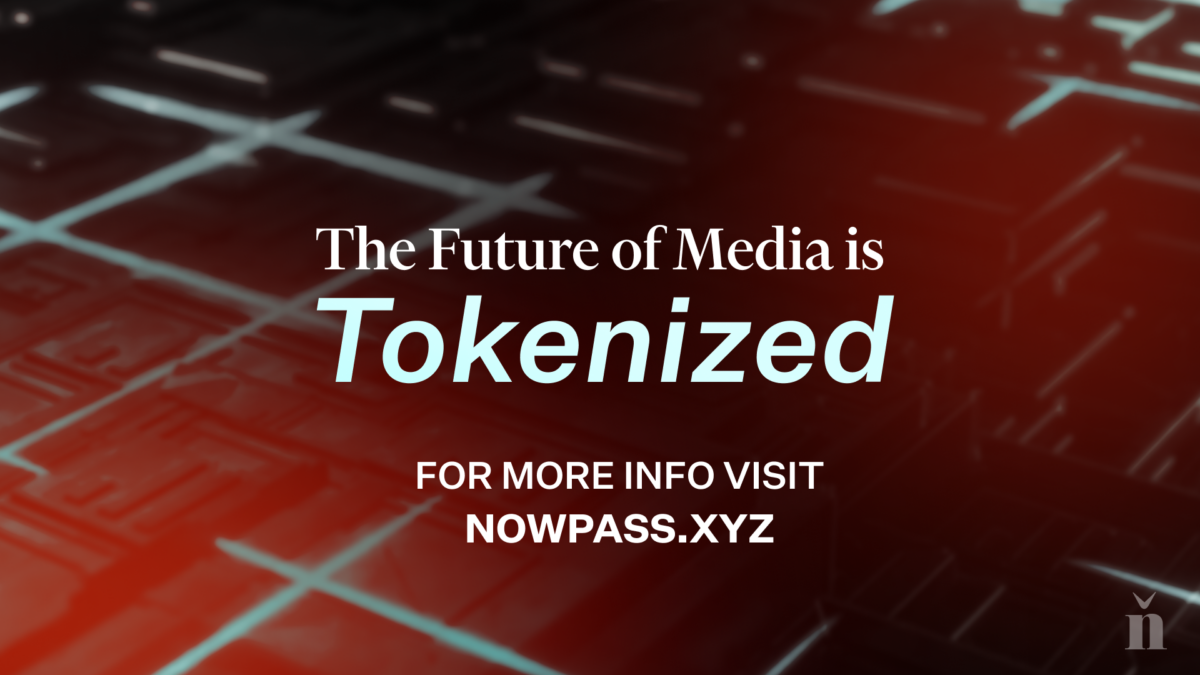Web2 Media is broken. The future of media is tokenized.

“We need more reach.”
“This will get a lot of clicks.”
“The client will not be happy with these numbers.”
We have heard these stories non-stop since our media career began more than 15 years ago. They are thought patterns that have become normalized in newsrooms and ad agencies around the world.
And this is only the beginning of the problems with the current state of the media.
The truth is this: Web2 media is broken.
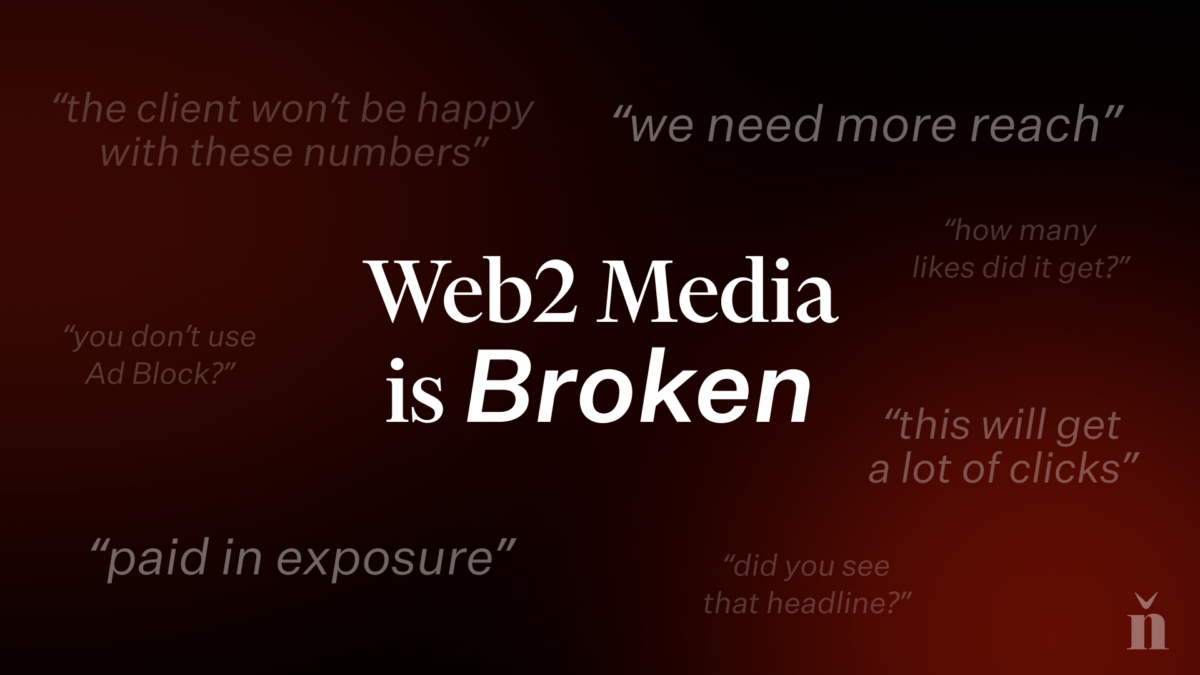
The traditional models and ways of doing things in media just don’t work anymore. This behavior did not come out of the blue. So how did we get here?
With the rise of social media, the traffic floodgates opened for media websites. Media companies saw an unprecedented explosion of reach due to these platforms and became dependent on this traffic, which contributed to the rise of programmatic advertising. This is the technology that powers those annoying banner ads on your favorite media sites, from New York Times to YouTube. The more people visit your website, the more impressions your ad gets, and the more the platform gets paid.
Funnily enough, the very platforms that ran this business model ended up changing their algorithms after seeing how much revenue they were allowing to leave the ecosystem by encouraging users to click away from Facebook or Twitter to a separate publisher site. Then in 2015, Facebook’s infamous algorithm change decimated the traffic sources for hundreds of media companies to keep more of their traffic inside Facebook. Due to declining revenues, some media properties even went out of business.
We know this because we have lived it. As editor-in-chief of SPIN, Matt saw first hand how traffic does not equal revenue as the publication was forced to undergo layoffs despite exceeding growth targets. As director of innovation and culture at Elite dailyAlejandro saw how the publication drove Facebook traffic to another sale Daily mail only for the traffic to decrease significantly after the algorithm change.
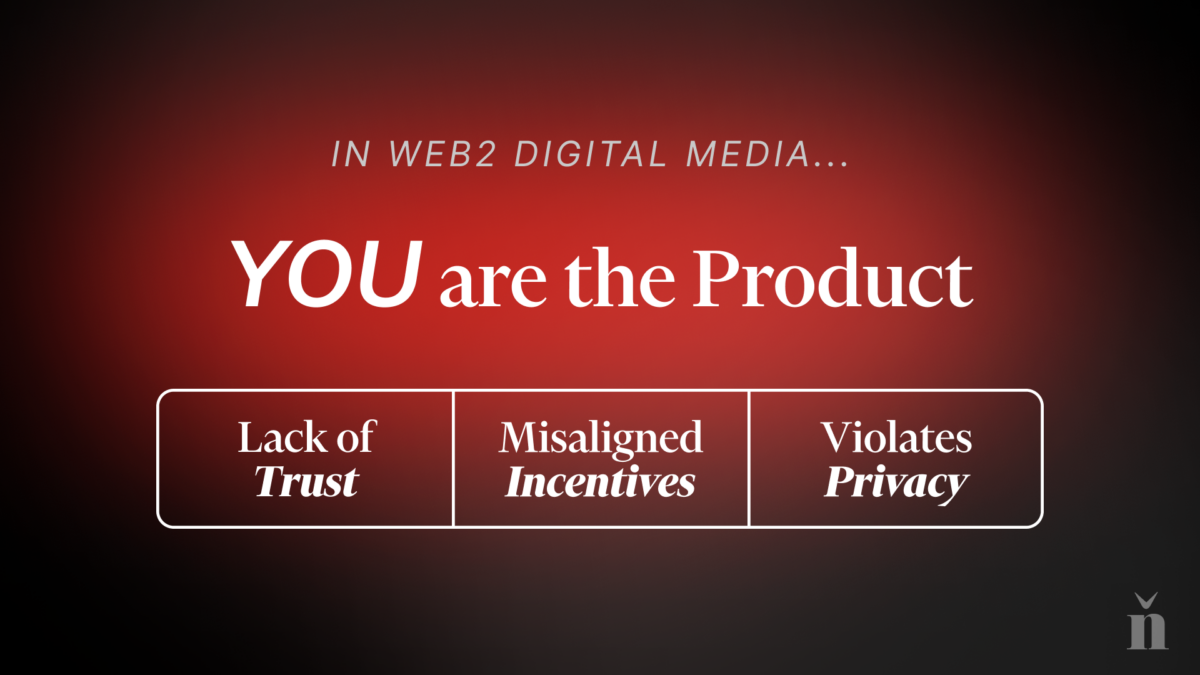
As media companies prioritized audience scale over quality and optimized for algorithmic platforms like Facebook and Google, there were a number of alarming developments.
At first, the media platforms found themselves locked in a clickbait race to the bottom. As algorithms rewarded sensational headlines and quick trigger fingers, the quality of coverage declined. The race to be first to a story also led to public embarrassments for major media brands that had to retract factually inaccurate reporting. As credibility eroded, public trust in the media reached an all-time low.
Second, people became the product. Programmatic advertising reduced us to eyeballs to be monetized and discarded. In the publishers’ eyes, no distinction was made between the quality and quantity of an audience. Simply put, we were all reduced to a single metric: traffic. By virtue of working in social media companies, the brightest minds in Silicon Valley ended up building an ad optimization machine, the likes of which had never been seen before. As a result, publishers began to prioritize their advertisers over their audiences.
Third, as publishers and platforms optimized for ad revenue, they began to attack our privacy. Platforms began tracking users across the web without their explicit consent to sell more ads – but technically, users consented by accepting the overly vague and legally detailed “terms and conditions”.
The rise of tracking users using pixels and cookies has encouraged privacy breaches across the web. Platforms can now track users’ movements, clicks and keystrokes, even outside their own website, in order to show them “better” ads.
Technology has always pushed storytelling forward. The Gutenberg printing press catalyzed the information revolution. The invention of the internet forced print publications to go digital. The rise of the smartphone moved digital media to embrace mobile. Web3 technology is of the same caliber. And with that, we have the chance to build something better.
Centered on an ecosystem of technology products that are decentralized, trustless, permissionless and interoperable, Web3 technologies have the power to create fairer models that benefit everyone. They return ownership to users, bypass the gatekeepers that control traditional media and social platforms, and allow creators and their communities to share the value they create.
But significantly, this tokenized revolution will not only change how stories are created and consumed, it also has the power to fundamentally redefine relationships that have been cemented for centuries. This technology can actually help us foster the deeper and more meaningful human relationships we desire. This comes down to the difference between audience and community.
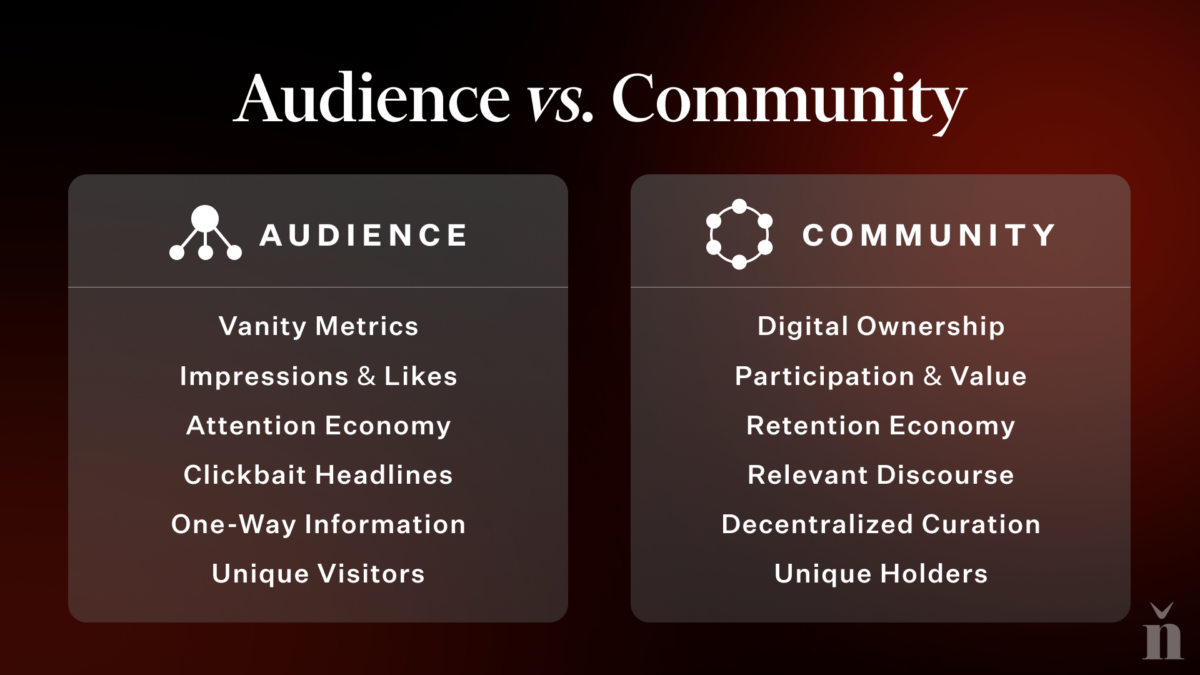
The audience is aware that you exist. They may recognize your brand and see you in social feeds. They may even attend your events or buy your products. But ultimately there is a limit to their participation and they are largely on the receiving end of the content you produce. As coverage became more homogenous to exploit algorithms, media brands became interchangeable, leaving readers with little incentive to choose one over the other. In web2, consumers became loyal to the headline, not the brand.
On the other hand, society wants to win together. And in web3, more often than not, they actually have a literal stake in doing so. By aligning incentives and rewarding participation by decentralizing ownership and governance, communities are the most important drivers of value creation.
In web3, digital ownership is central. For the first time since the origin of the internet, the blockchain allows root ownership. Now media companies and creators can build communities in a digital asset economy as an end in itself and earn money directly by sharing the value they create.
We envision a future where digital publishers break free from the mindless tyranny of clicks, pageviews and CPMs. Users will no longer be the product sold in outdated and exploitative systems; they will be active partners and owners in the content and experiences that are created.
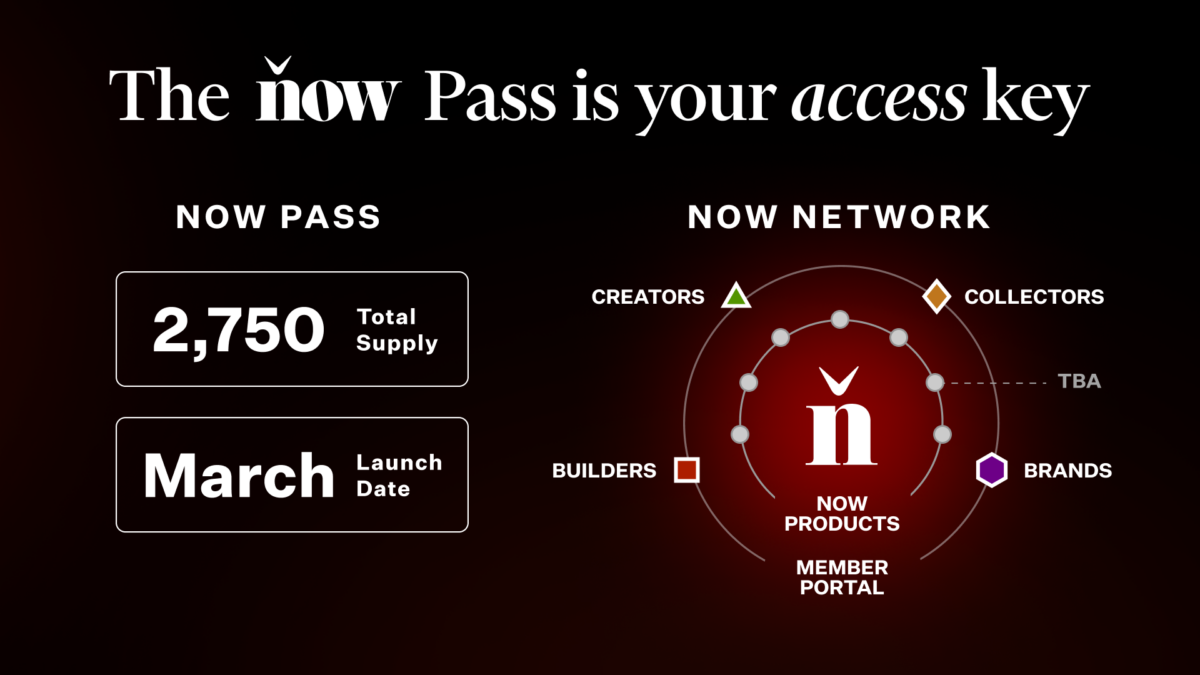
Introducing the Now Network
Because of these experiences, we wanted to to do things differently from day one. If you visit nftnow.com, you will notice that there are no banner ads. We refused to implement programmatic advertising because of the misaligned incentives it creates to prioritize advertisers over users, sensational coverage and infringe on user privacy. We believe that media companies should not show you ads; they should earn you opportunities.
We also refused to include pixels and cookies to track our users. Principles such as consent mean more to us. We believe privacy is a basic human right and should be respected on the internet.
The Now network is our next step in pioneering a community-centered media model and building a creator-friendly future. Now Pass is the key that unlocks that door. You can learn more about the details and mechanics at nowpass.xyz.
Here’s how the Now Network will begin to share the value created with our member community.
Super serve our community with exclusive content and access
From early access to information and insights to curated private chats where you can connect with experts and other builders in your industry, Now Network will provide you with the tools you need to succeed along with insider access to web3’s leading minds.
Now, Pass holders will also be eligible for exclusive access to our acclaimed IRL and virtual events, including our tentpole events The Gateway, NFT100 and nft now present, along with our satellite events around Art Basel Miami, NFT NYC, Frieze LA, ETH Denver, Faena Rose Miami, Jackson Hole and many more.
Increase retention and rewarding participation
We believe the media should be more than a one-way street. With Now Pass, community members will be encouraged to engage with content and provide feedback through our reward mechanisms. By realigning incentives and rethinking how a publisher can create and share value in a web3 context, we will encourage deeper, more authentic connections and a greater sense of loyalty.
Decentralization of content creation and curation
We want our society to become co-creators in the stories that are told. The Now Network is our first step towards progressive decentralization. We believe this will create a more inclusive and transparent ecosystem to incubate ideas and raise new voices. We will be transitioning some of our most popular content series (eg Next Up) to a community-curated Token Curated Registries (TCR) model with on-chain voting that allows our community members to have a say in who and what gets covered.
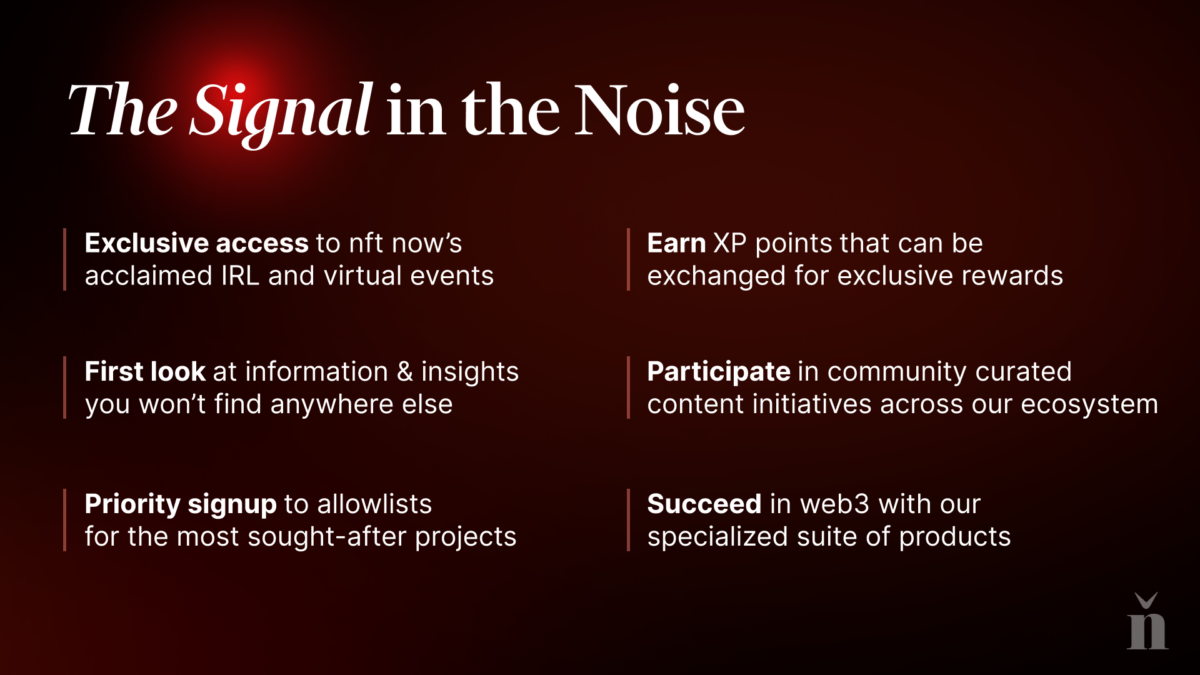
This is just the beginning
The Now network will be built over time, not overnight. We are conscious and take the time to create something sustainable. This is a first step – a foundation for all our initiatives to build the future of tokenized media. We may not always get everything right – and that’s okay. Experimentation is a critical part of pioneering a new paradigm. But our commitment to this space is long-term, so we will be building publicly over the coming months, years and decades. We invite you to join us in learning, growing and co-creating this future together.
You are more than a page view. It’s time to change the relationship between publishers and their communities.
Sincerely,
Matt Medved and Alejandro Navia
Co-founders of nft now
